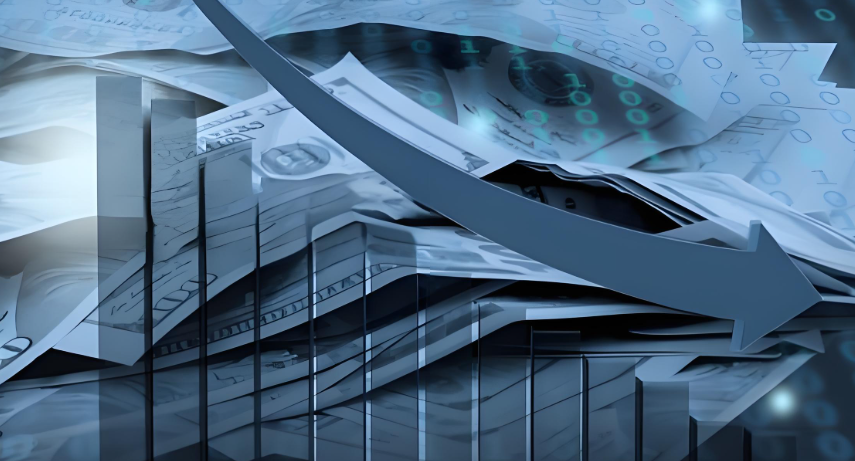On February 11th, a significant administrative order was signed by the United States, instituting a hefty 25% tariff on all imported steel and aluminum. The announcement conveyed a clear message: there would be no exceptions or exemptions for any entities involved.
The United States undeniably stands as a pivotal economic force on the global stage. Consequently, any adjustment to its trade policies can result in widespread ramifications. The implementation of these steel and aluminum tariffs has triggered a seismic disruption in the global supply chains for these metals. Numerous exporting companies, heavily reliant on the U.S. market, now grapple with surging costs and dwindling orders. Additionally, the interconnected upstream and downstream industries that support these companies face inevitable repercussions.
Upon this news breaking, a wave of risk aversion swelled among investors. U.S. stock index futures plummeted as a response; the Dow futures slipped by 0.2%, while the S&P 500 saw a drop of 0.25%, and the NASDAQ futures fell by 0.42%. Pre-market indicators reflected this sentiment strongly: Direxion’s leveraged ETF focused on Chinese stocks tumbled nearly 5%, with shares of Li Auto dropping around 4%. Other major players like JD.com experienced a decline exceeding 3%, Pinduoduo saw a drop of about 2%, and Alibaba faced a dip of approximately 3%. These figures represent investor trepidation regarding market outlook, prompting a recalibration of investment strategies toward safer asset classes.
In an interesting turn of events, the fleeing capital increased both the value of the dollar and gold prices. Generally regarded as a primary reserve currency, the dollar often acts as a safe haven amidst market turmoil. Despite a slight dip in the dollar index—down 0.05% to 108.28—this shift seemed minor compared to the overall anxiety permeating the market. Meanwhile, gold showed a remarkable performance, soaring above $2,940 an ounce at one point, achieving a new record high. As of the latest figures, it stabilized around $2,928.59 per ounce, marking a 0.71% increase. In times shrouded in uncertainty, gold’s value retention capability rendered it particularly appealing to investors.

On the international front, the European Union swiftly expressed its discontent. On the same day, Ursula von der Leyen, President of the European Commission, voiced her regrets regarding the U.S. decision to impose tariffs on European steel and aluminum exports. She articulated that the EU would not passively accept such unreasonable tariffs, promising to undertake firm yet measured countermeasures to safeguard the economic interests of the EU, its workers, businesses, and consumers. As a crucial global economic player with robust trade ties to the U.S., this tariff decision poses significant threats to EU industries. The EU's retaliatory measures may escalate tensions in global trade dynamics, drawing keen market attention toward the evolving negotiations between both parties.
Global stock markets were also influenced variably by these developments. The Euro Stoxx 50 index nudged up by 0.02%, reflecting a relatively stable response, while Germany's DAX index fell by 0.2%. This decline underscores the reliance of Germany, as an economic powerhouse in Europe, on the U.S. market and the resulting concerns over trade disputes. Conversely, the UK’s FTSE 100 rose by 0.2%, and France's CAC 40 increased by 0.1%, although the overall market mood remained one of cautious observation.
Meanwhile, in the foreign exchange arena, the Indian Rupee exhibited remarkable movements. At one point, the Rupee achieved its largest increase in over two years, appreciating nearly 1%. This resulted in the dollar falling by 0.65% against the Rupee, landing at 86.9. Such volatility might be attributed to adjustments in India's own economic policies, fluctuations in market demand, and the ripple effects of global trade situations. Nonetheless, this significant movement in the Rupee contributes new uncertainties to the Indian economy and financial marketplace.
Christian Mueller-Glissmann, head of asset allocation research at Goldman Sachs, provided insight, stating, "When it comes to asset allocation, the best approach is to identify ways to safeguard your assets. However, moving forward, that task will become increasingly difficult given the specificity of the tariffs." His comments capture the struggles faced by investors in the current climate. Amid rising protectionism and complex tariff policies, navigating asset allocation has grown substantially more challenging, necessitating careful consideration of risks versus returns.
Amidst this din in the financial markets, all eyes were directed toward Federal Reserve Chairman Jerome Powell, eagerly awaiting his upcoming remarks later in the day. Powell's statements often hold significant sway over financial markets. Given the escalating tensions surrounding trade issues and the current heightened instability, his insights could potentially guide market trajectories—whether in confirmation of Federal Reserve policy adjustments or interpretations regarding the current economic situation could represent a pivotal turning point for market movements.
The imposition of tariffs on steel and aluminum by the U.S. has triggered a multi-faceted chain reaction across global financial markets, affecting sectors like stock, currency exchanges, commodities, and asset allocations. Looking ahead, how global trade dynamics will evolve and the future direction of financial markets remain fraught with uncertainty. This situation will undoubtedly test the ingenuity and adaptability of governments, businesses, and investors around the world.
